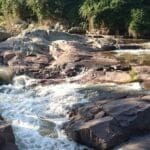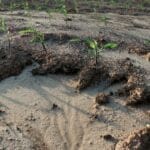Imagine a colossal crack slicing across the face of East Africa—this is the Great Rift Valley. But it represents far more than just a geological formation; it’s a living archive of our planet’s history and, even more profoundly, the birthplace of humanity. For millions of years, this dramatic landscape has cradled our ancestors, offering glimpses into the unfolding story of human evolution. For extreme heat experiences, visit the Danakil Depression.
Exploring the Tectonic Heart of Africa: Understanding the Rift Valley Formations
The East African Rift System (EARS) is a testament to the immense power of plate tectonics, born from the slow but relentless separation of the Somali and Nubian plates. As these plates drift apart, the Earth’s crust fractures, resulting in deep valleys, volcanic peaks, and stunning highlands, forming a mosaic terrain of immense geological and evolutionary significance. How has this geological activity shaped the distribution of early hominin fossils and influenced the trajectory of human evolution?
This separation has given rise to breathtaking geological marvels, but also created an ideal environment for preserving the remains of our distant ancestors. Sedimentation, often interspersed with layers of volcanic ash, rapidly buried remains, protecting them from degradation and allowing for precise dating. The discovery of “Lucy,” an Australopithecus afarensis fossil discovered in the Afar region of Ethiopia, stands as a testament to the Rift Valley’s unparalleled contribution to paleoanthropology. These fossilized remains provide essential clues about the development of upright walking, brain expansion, and the evolutionary milestones that led to modern humans. The relentless work of scientists continues to reveal these secrets, piecing together the captivating narrative of our past.
Geological Processes and Biodiversity in the Rift: How Tectonics Shape Life and Evolution
The Rift Valley continues its dynamic evolution. As tectonic plates shift and volcanoes rumble, rivers carve new paths, molding the ever-changing landscape. This constant environmental flux has profoundly influenced the astounding biodiversity of the region. Isolated communities of plants and animals, confined by deep valleys and volcanic mountains, have evolved unique adaptations, highlighting the delicate interplay between geological forces and the evolution of life.
“The East African Rift System is a product of intense tectonic activity and volcanic eruptions over millions of years,” notes a study in ScienceDirect, highlighting the long-term impact of these processes. The distribution of unique species, found nowhere else on Earth, underscores the Rift Valley’s significance as a haven for endemism. From verdant forests to sun-baked grasslands, the diverse habitats support an unparalleled biological richness.
Key Insights into the Great Rift Valley:
- The East African Rift System (EARS) is a product of intense tectonic activity and volcanic eruptions over millions of years.
- The varied geological processes created a mosaic of diverse habitats, from fertile volcanic soils to arid plains and high-altitude ecosystems.
- This habitat diversity drove the evolution of a wide range of species, contributing to the EARS’s exceptional biodiversity.
Volcanic Activity and Human Adaptation: Exploring the Connection
The Great Rift Valley, a breathtaking scar across East Africa, isn’t just a picturesque landscape; it’s a geological powerhouse where the dramatic rift is directly responsible for the region’s unique geological formations and volcanic activity. This area’s story is interwoven with the saga of human origins.
Imagine the Earth’s crust slowly tearing apart, a process millions of years in the making. That’s precisely what’s happening in the EARS. This immense system of valleys and volcanoes is where the African plate is gradually splitting, revealing the molten heart of our planet. The resulting landscapes are nothing short of spectacular: towering volcanoes, deep valleys, and vast lakes. But this stunning scenery hides a powerful and often dangerous force.
LSI Keywords: Volcanic Eruptions, Tectonic Plates, Fossil Discoveries
Within the EARS, volcanic eruptions take center stage, fed by upwelling magma and displaying a spectrum of eruptive behaviors. From gentle lava flows that sculpt expansive basalt plains to explosive eruptions that violently spew ash and gas, the region’s volcanoes have profoundly influenced the surrounding environment, affecting soil composition and even the air quality. The frequency and intensity of these eruptions fluctuate, posing considerable challenges and hazards to the densely populated communities residing near active volcanic zones.
While scientific strides have significantly enhanced our comprehension of volcanic activity within the East African Rift System, a number of critical questions persist. The precise triggers of volcanic eruptions, including the depth and extent of magma reservoirs, and the long-term probabilities of eruptions from individual volcanoes, remain subjects of intense scientific inquiry.
The convergence of the EARS with human history is undeniable. The valley’s abundant fossil record, nestled within layers of volcanic ash and sediment, yields critical evidence of human evolution. The changing landscapes, molded by the relentless forces of plate tectonics and volcanism, served as a crucible for the genesis of humanity. Even today, the earth beneath our feet holds the secrets of our past.
LSI Keywords: Geological History, Hominin Evolution, Fossil Record
“The EARS is not just a geological wonder; it’s inextricably linked to the story of humanity,” emphasizes a study in Nature. The unique environment fostered by the interplay of tectonic forces and volcanism served as a crucible for human origins, with the valley’s rich fossil record providing invaluable insights into our evolutionary journey.
Key Initiatives for Volcanic Hazard Mitigation Include:
- Implementing enhanced monitoring systems to better predict eruptions.
- Establishing robust disaster preparedness programs.
- Fostering international collaboration and infrastructure investment.
Improved monitoring systems, coupled with effective disaster preparedness programs, are vital for mitigating these hazards. International collaboration and investment in infrastructure are crucial in bridging the gap between crisis response and proactive risk reduction. The future of communities living near these active volcanoes depends on it.
Biodiversity Hotspots and Endemic Species: The Rift Valley’s Ecological Significance
The Great Rift Valley is more than a dramatic landscape; it’s a crucible where Earth’s tectonic forces have shaped life itself, including our own. This extraordinary geological feature has given rise to biodiversity hotspots and endemic species in the Great Rift Valley ecosystem, a testament to nature’s resilience and ingenuity.
Picture a land torn apart, soaring mountains, and sinking valleys. That’s the essence of the Rift Valley’s creation. Millions of years of tectonic plate movement have sculpted this region, creating varied habitats from lush forests to arid plains. This geological dynamism is key to understanding its incredible biodiversity. Different elevations mean diverse climates, soil types, and vegetation. This, in turn, supports a rich tapestry of plants and animals. In fact, the valley’s varied altitudes are directly linked to the distribution of life, creating gradients of biodiversity that showcase nature’s ability to adapt to its surroundings.
LSI Keywords: Ecosystem Diversity, Habitat Conservation, Species Adaptation
As highlighted in a study published in Scientific Reports, The Great Rift Valley is home to a plethora of endemic species, plants, and animals found exclusively within its confines. They’re adapted to the specific conditions of their environments, underscoring the importance of conserving this region. Consider the countless generations of evolution that have shaped these species—each uniquely adapted to their particular niche within this vast ecosystem. Their survival depends on the preservation of their habitats.
However, human activity presents both opportunities and challenges for the Rift Valley’s biodiversity. Agriculture, while essential for feeding populations, can lead to habitat loss and fragmentation if not managed sustainably. Sustainable agricultural practices are essential to maintaining biodiversity while ensuring food security. This includes agroforestry, crop diversification, and responsible land management.
The future of the Great Rift Valley depends on collaborative efforts. Local communities, governments, and international organizations must work together to implement effective conservation strategies. This involves combining scientific research with practical solutions, community engagement, and robust policies, ultimately safeguarding both human livelihoods and the long-term health of this incredible ecosystem.
















